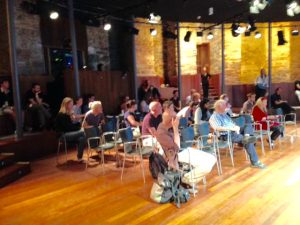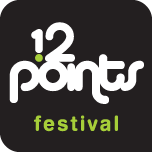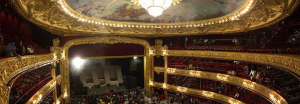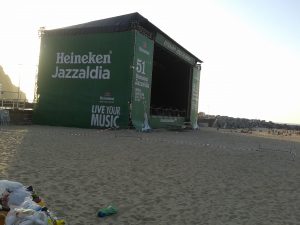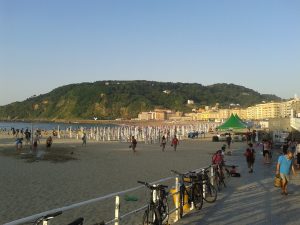
In summer 2016 a small number of us attended and spoke at the 12 Points Festival of European improvised music, which was held in San Sebastian. It was consciously scheduled alongside the annual city jazz festival, as part of a bumper package of summer music befitting the San Sebastian’s status as 2016 European Capital of Culture (along with Wroclaw).
We were with friends and the music was great—we’d already listened to three avant-garde acts from a box (yes) in the Victoria Eugenia Theatre as part of 12 Points Festival, and now we were in a hurry to join in and enjoy the generous free stages of the 51st Jazzaldia, San Sebastian’s impressively longstanding jazz festival.
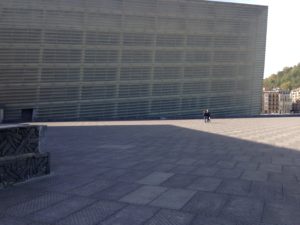
We followed the people and the music across the river and down to the beach. It was one of those magic nights. The crowds swirled around the various stages, the live music from one stage bled creatively into that from another, there were packed beer tents where you had to shout for a drink, the rain mostly held off and there were glimpses of stars through the clouds, the sound of the waves crashing against the beach could just be made out in a lull between numbers. It was dark and packed like a rock festival, yet the lights of the city and the shade of the sea were all around in brilliant contrast.
We had a few drinks, it’s true. And the music! Someone said Marc Ribot is playing here tonight and I was like, Marc Ribot, I love Marc Ribot! And it’s free, really? In fact it was Ribot and his star Young Philadelphians band, doing the disco project, as cool as uncool can get (for those who preferred punk to soul back in the day). I mean, the bass guitarist, thumping out powerful and heavy lines, was Ornette Coleman’s bassist, Jamaaladeen Tacuma.
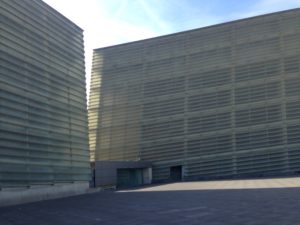
The night was so good that there are no photos. We all shouted possibly a little too loud for an encore, and the band came back on. Ribot sat down and alone played the guitar figure from Van McKay’s (I wish. OK, McCoy) 1975 hit ‘The hustle’. Well, we were thrilled and loved it, cheering and doing the hustle for all our worth. It was a perfect choice, for a perfect encore—funny, clever, knowing, respectful of a disco-soul-jazz tradition some of us had not given much thought to.
Fantastic memories of a special night of music, friendship, and festival. Whenever we meet now someone will burst into ‘The hustle’ and we smile, laugh, do a little dance. We were touched by the music, at the jazz festival. It was intangible, in a temporarily transformed public space for culture, a pleasure for everyone there.
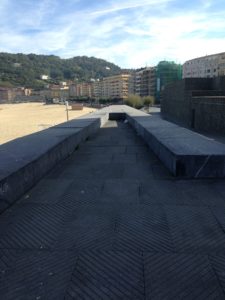
Finding myself in San Sebastian again after the summer, I went to look at the public cultural space by the beach where we had had our transcendent collective dance, the recent landmark Kursaal complex (opened 1999) on Zurriola beach. But where were our memories and pleasure, where was the place of our memories and pleasure? Surely not here! We had been Kursaal Flyers in July, but by October this seemed to me a silent barren place, magnified by its own scale and emptiness.
The Kursaal complex from the outside seems a place that is designed to demand transformation, hard and hard up against the golden sand, by an influx of people, by music resounding off its walls. To me, looking for the festal trace, it dramatises the potential of transformation, alongside the difficulty of articulating the intangible. It needs a festival, to live. It really needs to do the hustle.
